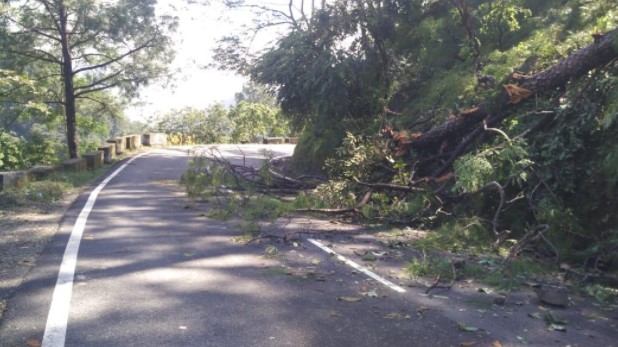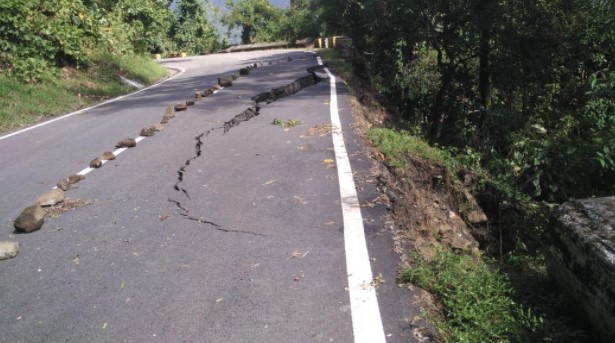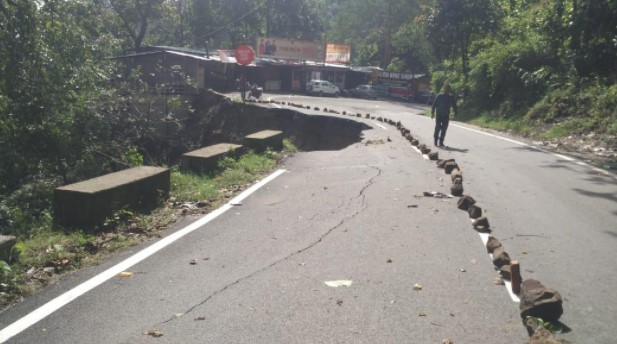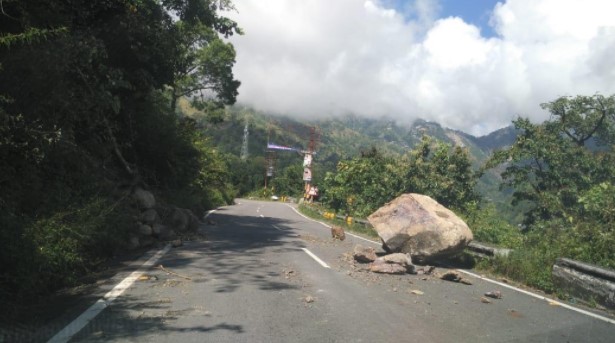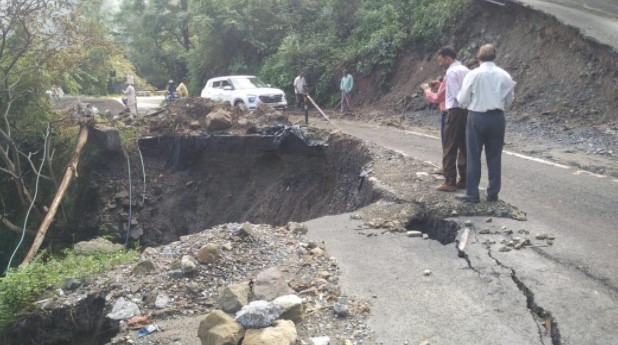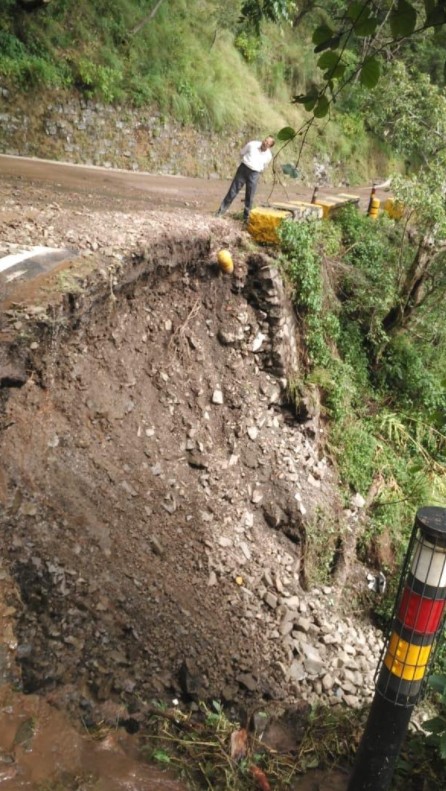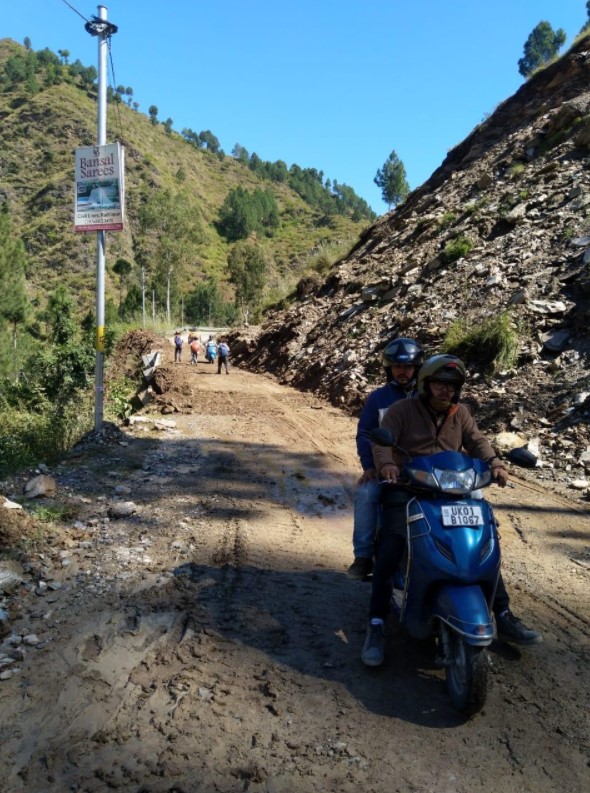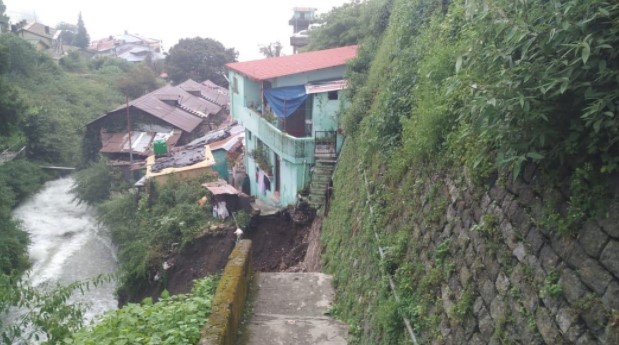Entire Villages Swept Away, Residents Cope with Uttarakhand Devastation
'The development design that we are following for the state is also a probable reason

Uttarakhand has faced immense damage and loss of life this week due to unseasonal heavy rains all around the state, creating havoc in Nainital, Ramnagar and Almora. A red alert was issued on October 18 warning of cloudbursts and rainfall well over levels considered safe.
Nainital witnessed 535 mm (nearly two feet) of rainfall in 24 hours, cutting off the town from the rest of the world. Places nearby have also been affected by heavy rain, debris and utterly damaged roads.
“There is no turn on the road that doesn't have debris on it, or where a massive chunk of the road has merely fallen off,” said Deepak Bora from Jeolikote, a village located near NH 109 in the Nainital tehsil.
Traffic was halted on the highway, and ambulances and the few travelling vehicles were diverted to the Ramgarh road.
“The debris on NH 109 was quite heavy and it has sustained heavy damage. The walls and parapets on the road have also incurred damage due to heavy boulders falling on top. Continuous work is being done and after three days of gruesome digging and mending, the road up to Kherna is open to traffic. However, heavy vehicles aren't allowed on the road yet,” said PWD assistant engineer MB Thapa.
He said the stretch of highway from Kherna to Kwarab has sustained heavy damage and might take longer to rebuild. “NH 109 would require a sum of 2 crores to mend and repair. Former NH 87 extension Jeolikot to Kwarab which has suffered massive damage would require around 30 crore to be restored completely.”
Nainital town itself was submerged in water, with the Naini lake rising over its banks and water flowing into people's homes. The famous Naina Devi temple was also submerged in knee deep water.
“The shops and houses on the Haldwani road have faced destruction, some meat-shop chickens drowned with the heavy inflow of water, and mobile shop owners suffered losses in lakhs due to the incoming water. One of the people had water come into their house, their bedding, almirah and other stuff which got wet and destroyed,” said Nainital resident Shuaib Ahmad.
Debris fell on some places in Almora as well. “Water got into my animals’ shed with debris falling down. We had to work all night to keep the water out to keep the cattle safe and dry,” said Shobha, a resident of Kasar village in Almora.
With such heavy rainfall, the Kosi river is also flowing well over the danger mark. Its catchment areas received 227–530 mm rainfall in 24 hours, official data show.
“Due to the rise of water levels in Kosi, many areas of Ramnagar were flooded with water. While the water has receded now, the damage done by such a tragedy has affected many. Farmers have lost their crops and many unfortunate have also lost their homes,” said Miteshwar Anand, who is affiliated with the environmental group Kalptaru in Ramnagar.
Here the three villages of Chukam, Amarpur and Mohaan, which together form a gram sabha, were the worst hit.
Chukam was one of the most unfortunate as the entire village with all its houses was washed away by the engulfing waves.
“Around 25 houses were swept off in high currents. However, the villagers were evacuated before the calamity hit the place and no loss to life was witnessed,” said Miteshwar Anand.
These villages are hit each time the Kosi changes course. According to residents, over a decade the river has changed course completely from Mohaan to Chukam.
This change “has resulted in engulfing nearly all of the village, with only one fourth of the village still standing,” said AG Ansari, a resident of Mohaan and a field biologist for the state forest department.
In Mohaan a few holiday resorts received debris, but with the right information at the right time they were evacuated safely.
“I called the neighbouring village and informed everyone of the looming danger. Around 8pm most of the people left for high ground. The police had also announced earlier in the village about the red alert and so the villagers were prepared, and so although property was damaged, no one was harmed or injured,” said Ansari.
Meanwhile the residents of Sunder Khal, a village in Ramnagar, were rescued with the help of air force helicopters.
In the village of Dhikuli on October 20, a young girl was washed away by the floodwaters. The body is yet to be found. “A search mission is in progress, the first day we were out till 6:30 to 7 pm. We also sent two rafts to look for the body but haven't found anything yet,” said police constable Mukesh Negi.
According to Ramnagar MLA Ganesh Rawat, “The affected people are being provided with shelter, ration and medicines by the government. Other issues are also being taken care of, like providing water after a two-day lapse in running water” provision.
The state government has announced compensation for Rs 4 lakh to the families of the deceased, and Rs 1.9 lakh for people who lost their houses or shops due to the heavy rains. Announcing the compensation, the chief minister Pushkar Dhami is also reported to have said the government will provide all necessary help to those who lost their livestock.
Experts agree that one of the major reasons for the devastation is global heating caused by agroindustrial activity. “Climate change is real, it’s not a hoax. The intensity and frequency of cloudbursts in Uttarakhand have increased in only the last 8-10 years,” said AG Ansari.
However, global heating is not the only cause. “The development design that we are following for the state is also a probable reason for such destruction. A lot of development activities have been on the rise near the river, which is one main reason to determine the destruction caused. Also, machine-intensive construction for the widening of the road has resulted in such landslides,” MLA Ganesh Rawat told The Citizen.
As the roadblocks are being cleared up, problems with electricity, running water, and the spurt in prices of essentials has got people worried. “I guess we have to get used to such high-intensity destruction,” said Shobha.
